Definitions, categorizations and comparisons fill the world of art theory. When it comes to Film Art there seems to be an almost endless stream of terms. Defining “cinema” and determining what films truly achieve “cult” status is not always as easy as it would seem. A great Cinematic Master gave a definition that I’ve always found inappropriate and insulting. However I am forever returning to his definition in much the same way I am constantly re-watching one of his many masterpieces.
Federico Fellini once described the art of cinema as “...an old whore, like circus and variety, who knows how to give many kinds of pleasure.”
There is a good deal of validity to this definition. Film has become an integral part of our culture and is quite possibly the most valued art form which screens 24/7 all over the world. It is also based on a model so firmly grounded in marketing and profit earning that is impossible to talk with any filmmaker and not end up discussing the costs to make them and how much they earn. Of course even while money is the requirement and the goal, it takes a backseat to the pleasures it provides to us, its John. And we are a constantly returning customer. No matter how bad the weather or strapped for cash we might be. This is one service most of us seem to need and we constantly run the risk of being disappointed.

Lonely, isolated and sad. Mid-1970’s audiences did not know what to think of this strange Surrealist take on Casanova. Three decades later, a whole new audience eagerly awaits a refreshed print. Criterion Collection?
Donald Sutherland
Fellini’s Casanova
Federico Fellini, 1976
Cinematography | Giuseppe Rotunno
Sometimes one of the these movies seems to pull us back again and again. We can’t get enough. This of course is not a hooker. This is a film that develops a loyal following no matter its profit margin. And no matter how hard it is to locate. We pursue it. Welcome to the Cult Film. David Lynch’s Eraserhead is an exceptional Cult Film. It is not a bad film. I would argue that this 1977 film represents years of work, dedication and is ultimately a fine work of American Art. But how can a films like Eraserhead and Grey Gardens be lumped into the same category as Roger Vadim’s Pretty Maids All in a Row or Mark Robson’s painfully bad, Valley of the Dolls? Well, it is pretty easy actually.

“They drummed you out of Hollywood, so you come crawling back to Broadway. But Broadway doesn’t go for booze and dope. Now get out of my way, I’ve got a man waiting for me.”
Valley of the Dolls
Mark Robson, 1967
Wikipedia prefers to apply the term “Cult Classic” instead of “Cult Film.” The definition provided is “…a film that has acquired a cult following. Cult films are known for their dedicated, passionate fanbase, an elaborate subculture that engage in repeated viewings, quoting dialogue, and audience participation. Inclusive definitions allow for major studio productions, especially box office bombs, while exclusive definitions focus more on obscure, transgressive films shunned by the mainstream. The difficulty in defining the term and subjectivity of what qualifies as a cult film mirror classificatory disputes about art. The term cult film itself was first used in the 1970s to describe the culture that surrounded underground films and midnight movies, though cult was in common use in film analysis for decades prior to that. Cult films trace their origin back to controversial and suppressed films kept alive by dedicated fans. In some cases, reclaimed or rediscovered films have acquired cult followings decades after their original release, occasionally for their camp value…”

“A good football coach can get away with murder.” Uh, oh. Movies do not get much worse or conversely better than…
Pretty Maids All In A Row
Roger Vadim, 1971
The definition goes on to discuss the fact that Cult Classic is not limited to the campy or the failed. It is often reserved for films that are acclaimed but never quite move into mainstream success. There are some exceptional Cult Classics, or Cult Films as I prefer to call them. These are artistically solid works of Film Art that may not have broken box office records or secured the false acclaim of The Academy Award. In fact there are some fairly new films that are brilliant and are already achieving Cult Film status. There are also a number of God-awful movies that have over the past decade have begun to return to our attention as Cult Films.
Both Roger Vadim’s deeply odd Pretty Maids all in a Row and Mark Robson’s big-budgeted major studio Valley of the Dolls have enjoyed the status of Cult Films for decades. These are both examples of unintended camp. When it comes to Robson’s adaptation of Jacqueline Susann’s hugely successful novel, the idea of Cult Film is turned every which way but loose. This film was actually a huge box office hit. When watching this infamous movie it boggles the mind that our parents and grandparents were rushing to local movie theaters to watch this astoundingly bad film. But they did. Drag Queens should be given credit for catching the camp value of this film first, but over the past couple of decades those of us who love a great bad movie have come to love it just as much. At once shamelessly lewd and contradictorily innocent, from start to finish — VOD is continually amping itself up to a seemingly endless escalation of camp.

An exorcise in narcissism featuring fashion designs from the mind of the film’s star. Another painfully bad film that is so desperately horrible it becomes an endless source of fun!
Diana Ross
Mahogany
Berry Gordy, 1975
Cinematography | David Watkin
Roger Vadim’s Pretty Maids was designed to cash in on the idea of the T&A movie merged with once major Hollywood Players. Rock Hudson and Angie Dickinson quickly tossed cautiously crafted on-screen personas to prove they were hip to the grooves that had spread across middle America. Keenan Wynn, Telly Savalas and Roddy McDowell were also eager to strap it on for the ride. None seem to be embarrassed as they romp about with semi or fully nude nymphettes. Nor do any seem to be bothered by the fact that the sexual teases were also mixed with serial murder killings. The film was also intended to be a dark comedy. The film flopped. It was decidedly not hip and most certainly far from cool. It was not particularly funny. It did however open a door for Telly Savalas by inspiring the idea of what would become Kojak. After the tragic death of Rock Hudson, this film began to be re-evaluated. It was still bad, but oh so much mind-blowing fun to watch.
As bad as these two major studio films are, neither can top Berry Gordy’s ill-advised star-vehicle for Motown’s own, Miss. Diana Ross. That film is Mahogany. A hit song did not a hit movie make. When news that the film was being released to DVD, fans rushed to pre-order it. So unwilling to have to even think about the movie, Diana Ross herself held up over 500,000 newly printed DVD’s hostage (!) until someone convinced her it would be cheaper to let the film out. Those of you who know the fun that is Berry Gordy’s Mahogany hold that DVD close to your hearts. Of course it was this film that inspired Rupaul to become the persona she is today! But Mahogany merits its own post. There is not enough room here.

“Death to Videodrome! Long live the new flesh!” An example of profound Surrealism that verges toward that of Cinematic Masterpiece is now considered a Cult Film or Cult Classic. As well as a beloved member of The Criterion Collection.
Videodrome
David Cronenberg, 1983
In the early 1980’s David Cronenberg finally secured a modest, but decent budget when he made Videodrome. Featuring Pop-Icon, Debbie Harry, in a pivotal role — this controversial and surreal examination in body horror and paranoia was acclaimed and achieved a slight success in cinemas. Far too grim, graphic and controversial to achieve major box office success — this film was admired. By the time it was released to VHS, Cronenberg’s dark vision had already built a solid fan base that would continue to grow. Videodrome is now rightly viewed as somewhat of a cinematic masterpiece. It is also a member of the esteemed Criterion Collection. This is a Cult Film that is brilliant and some 30 years on — it still threatens to bite. Despite the fact that the technology key to the film’s plot has long been left behind in the dust, this movie remains disturbing, visceral and horrifying. Interestingly, this film also remains controversial in its depiction of BDSM.
But I’d like to shift focus forward to a couple of more recent films that are quickly establishing themselves as Cult Films. One such movie is Evan Glodell’s 2011 independently produced, Bellflower.

“Dude you are fucking Lord Humongous. The master of fire, the king of the wasteland.”
Bellflower
Evan Glodell, 2011
From the first moment Evan Glodell’s writing/directorial debut, Bellflower, starts – – the audience knows that they are about to watch something at once slightly familiar and yet remarkably unique in almost all aspects. Bellflower is not quite like any movie you have seen. Without giving away any spoilers the film begins as a rather humorous and sad take on a relationship between two late twenty-somethings one of whom is a man obsessed with apocalyptic movies and creating weapons in preparation for the end of times.
The main character fill his days and time with his best bud day dreaming about the ultimate apocalypse in which they will each play roles of the Mad Max/Road Warrior types. These two men share a child-like joy in the planning of playing these roles in the Hell that will be left after the world as they know it ends. All the more interesting is the fact that these two “dudes” do not even have any sense of their own immaturity or the irony that their adult feet are planted so firmly in adolescence.

His heart broken and without the maturity to work through a lost first love, Woodrow’s mind leads us into a film where reality and fantasy become blurred.
Bellflower
Evan Glodell, 2011
Cinematography | Joel Hodge
The plot takes a turn for the romantic when Woodrow, played by director/writer, Evan Glodell, meets the beautiful and equally odd, Milly. Like Woodrow and his close pal, Aiden, Milly seems to be stuck in a rut of narcissistic immaturity. Milly and Woodrow fall in love but both lack the maturity to navigate the wild woods of a romantic relationship. It isn’t long before their relationship takes a dead end turn. At that point Bellflower pulls the audience into the darkest corners of damaged heartbreak and rage. Bellflower becomes a devastatingly disturbing apocalyptic journey filtered through the eyes of drug-fueled insanity. Glodell has cleverly created a highly artistic and powerful study of the Love Wounded Boy-Man Walking. As this metaphor that when merges with the stunted emotionality of the character, Bellflower comes close to the trajectory of Coppola’s cinematic masterpiece, Apocalypse Now. In fact, Bellflower almost manages to make Apocalypse Now seem like a Disney movie. This impact is quite a cinematic feat.

For one immature slacker, love takes a startlingly apocalyptic turn. Bleeding, violated, defeated and broken — Evan Glodell and Jessie Wiseman embrace as everything around them seems to fall apart.
Bellflower
Evan Glodell, 2011
Cinematography | Joel Hodge
Evan Glodell’s film deals with pain and frustration that every young adult feels in his/her first loves and quite literally blows them to oblivion. It is a gut punch that would make the strongest of people bend over or, at the very least, squirm in their seats. While this film garnished Film Festival attention, it did not fare so well at the box office. Since it was released to DVD, Blu-Ray and VOD, this film has emerged with a fierce following. While it is about as dark as any film can get, it resonates.
This movie is tapping into a current vibe shared by many as we enter the 21st Century. So much is unknown. So much is uncertain. Uncomfortable change and misadventure seem to be in the air. Bellflower plays with that creepy societal feeling to an extreme that turns to an almost manic glee of vengeance. The failure of the characters to have grown into mature/adjusted men and women is presented as a reflection of a generation weaned on TV, bad movies and low expectations. Bellflower grinds into the psyche as a blistering reminder of our shared creation of a generation of people largely misplaced and lost.

Armed with a hand-made weapon of destruction, our tragically lost man-child sets out to right wrongs and assert his masculinity.
Bellflower
Evan Glodell, 2011
Cinematography | Joel Hodge
Bellflower, like Woodrow’s amped up car called Medusa, speeds, twists, turns, shoots out the very flames of fury and spins out of control into crashing oblivion. Horrible heartbreak speeds through the veins of Woodrow without the boundaries of emotional understanding to know when to put on the breaks or slow down at corner. This is spectacular feature film debut. Fingers crossed that Glodell will emerge with a new film soon. But no matter what he does, this dark film lives on in the minds of those who see it. And see it again.
In the Robert Altman’s 3 Women, Shelley Duvall gleefully informs Sissy Spacek, “This is my parking space. It’s the best one!” Later Duvall explains, “That’s Dirty Girtie! Pull her bow and she’ll say hello!” Her delivery of these improvised lines creates an odd and varied response for viewers. Some giggle, some laugh, some are not sure how to react, but many viewers feel the need to go fetal with dread. This film was inspired by a dream Altman experienced. He assembled his cast out in the desert and began filming. While there was a very loose form script, he encouraged both Duvall and Spacek to come up with their own voices for their respective characters. The entire film feels like a hazy dream that offers a glimpse into the psyche’s darkest corners of loneliness, insecurities and unsure identity.
The majority of film critics of the time loved the film. Sadly there was one exception. That exception caused a great deal of damage to the film’s potential for success. This would be the first Robert Altman film that Pauline Kael would dismiss. The film’s initial release was fairly limited to major cities and on to the Art House screens. Kael’s odd disconnect to this brilliant film kept many intellectuals away.

Millie Lammoreaux strives to be sophisticated and a woman of taste.
Shelley Duvall
3 Women
Robert Altman, 1977
Cinematography | Charles Rosher Jr.
Before any sort of “word of mouth” regarding Robert Altman’s surreal experimental film had the chance to spread, it was pulled out of circulation within 8 days. Over the following two decades 3 Women became not only a “Cult Classic” but was largely considered one of the most important American films of the 1970’s. Robert Altman’s study of identity, isolation, loneliness and sexuality is pure cinematic magic. Shelley Duvall and Sissy Spacek are pitch-perfect. The cinematic experimentation employed is fully realized. His two lead actresses’ visions blend, but most importantly they successfully morph into Altman’s disturbing dream world. Sissy Spacek is outstanding in the film, but it is Shelley Duvall who remains the film’s vital core.

Almost completely improvised, these two actors transform their director’s dream into a psychological study of identity that manages to be Surreal, comical and surprisingly horrific all at once. There is a great deal going on here…
Sissy Spacek and Shelley Duvall
3 Women
Robert Altman, 1977
Cinematography | Charles Rosher Jr.
Despite the fact that the film was available on only inferior VHS tapes and in loose fragments online — much of which focused on Duvall’s scenes featuring only the eccentricity and comic aspects of her performance — 3 Women has never been short of devoted fans. Thanks to The Criterion Collection, the film was beautifully remastered and issued for all those devoted to grab. And of course, the film has since snared an even bigger audience and reappraisal. Some like to frame this film as an American answer to Ingmar Bergman’s Persona, but that is a poor framing device. 3 Women is far less tight in construction. It flows over the viewer. While Duvall may make the audience laugh, she also slips in under the skin. Millie‘s awkwardness feels a bit too familiar. Spacek’s Pinky slowly begins to take on a sinister edge. By the time we become aware of the third woman played by a mute Janice Rule, the spell has been cast. This Cult Film goes deeper with each viewing.

“Dreams can’t hurt ya.” Or maybe they can…
Shelley Duvall
3 Women
Robert Altman, 1977
Cinematography | Charles Rosher Jr.
In many ways, Altman’s 3 Women almost seems more tied to the American Underground Film of the late 1960’s to mid-1970’s. So many interesting works emerged from this Underground. One of the most interesting is also a film which has attracted a huge following over the past 20 years is a notorious epic called Thundercrack!.
Thundercrack! is truly one of the oddest films ever made. An odd mix of dark humor, surrealism and hardcore pornography — it can be a difficult viewing for some. A movie never intended for all audiences, this movie aims both cerebrally and very much below the belt. This film is a tripped-out work of art by the most bold artists’ of The 1970’s Bay Area. The level of Surrealism and Absurdism should not be denied. And on top of everything else, this twisted epic of a movie is often very funny. This is a film that makes John Waters’ early films seem tame. Make no mistake, this film plunges into the full-on hardcore porn found in the mid-1970’s. It is like an experimental theatre company gone to seed and given a camera.
The thing about Thundercrack! is that while it is all of these things, it manages to step up toward a twisted version of Art House Cinema. This may be a part of The Underground Trash Cinema subgenre, but it is clearly an artistic venture. Directed by Curt McDowell and co-written with Mark Ellinger (who also serves as the film’s composer and sole musical instrument player!) — the script would also feature some added ideas from the infamous George Kuchar. McDowell was a Queer Artist going places. Tragically, AIDS would steal him away from the world far too soon.

Mrs. Gert Hammond finds her home full of lost souls with more than a few secrets, but all of them are limp when compared to Gert’s.
Mark Ellinger and Marion Eaton
Thundercrack!
Curt McDowell, 1975
Marion Eaton is the film’s “star.” She plays sad Mrs. Gert Hammond. A wealthy, constantly drunk/drugged eccentric, we find Gert drunkenly yelling at her radio. A horrid storm is raging and she soon opens up her home to a wild and often sordid bunch of strangers who need shelter from the raging storm. Each character has a dark secret, but none have a secret that tops the two Mrs. Gert Hammond is keeping. Gradually each secret is revealed until the film builds to its insane crescendo when Gert’s secrets are revealed. Interestingly, this motley crew is willing to accept every secret except for the two belonging to their host. Mrs. Gert Hammond simply goes too far.

A demented and often brilliant vision captures the mood of the mid-1970’s Sexual and Cultural Revolution. …with plenty of lube.
Thundercrack!
Curt McDowell, 1975
All manner of things happen. Conflict and melodrama run amok. In between strange scenes of banter, the film features a wide range of sex acts. Leading us back to The Bay Area of the 1970’s when sexual experimentation and exploration were still free of dangers, nothing appears to be off-limits for these characters. This is fluid sex at it’s most hairy. Never actually erotic, the sex scenes seem to serve more as an empowering statement of sexual rebellion and freedom. These actors don’t just go for broke, they are out to break. The most impressive member of the cast is Marion Eaton. Every movement, line and gyration is delivered with theatrical sincerity. The late Ms. Eaton even finds moments of poetry which she delivers as if her life depended upon it.

“Who is it that speaks to me with the voice of a woman?”
Marion Eaton
Thundercrack!
Curt McDowell, 1975
Heavily censored and often difficult to find, Thundercrack! has a running time of close to 2.5 hours. It will be too much for many, but for many it is an unexpected, strange and wild trip. Thundercrack! ‘s road to restoration and Blu-Ray/DVD has been a long one. But Synapse Films has finally released it to the Cult that has been waiting patiently. This film is not for everyone, but if you’re feeling adventurous you will discover a movie that can still leave a viewer God-smacked some 40 years since it first screened. This is a film that defies categorization, time, space and your judgement. It does not care what you think.
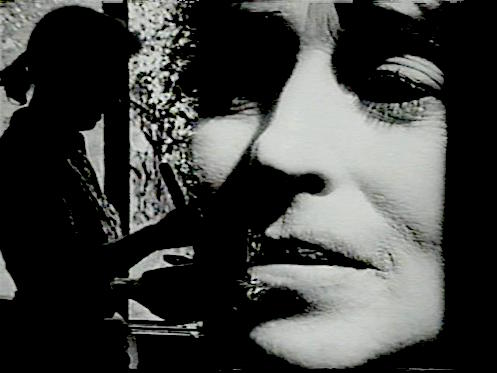
Artistic and poetic moments surface between scenes of hardcore sex and absurdist situations…
Marion Eaton
Thundercrack!
Curt McDowell, 1975
As Spencer Susser film begins a middle grade teacher tells his class, “Now today we’re going to talk about ‘metaphor.’” Welcome to the world of TJ played by Devin Brochu. TJ’s father (played exceptionally by Rainn Wilson) has fallen into a deep depression following the death of his wife and TJ’s mother. They are now living with TJ‘s elderly Grandmother. Piper Laurie delivers a touching performance as an elderly woman who feels helpless as she sees her son vanishing and her grandson losing control.
Everything takes a very fast change for “the better” when a stoned-out, psychotic, metalhead and ‘pyromatically’-inclined dude named Hesher appears. At first he is a threat to TJ, but soon he becomes a hero. Hesher takes it all on for TJ. Spinning wild tales of drug-fused adventures and sexual escapades. Hesher is sort of like a very sick and twisted id personified. Hesher quickly leads the boy into a string of dangerous, profane, violent and sexually charged situations. Essentially this film is about rage. In fact, it is one of the most interesting explorations of rage I’ve ever seen.
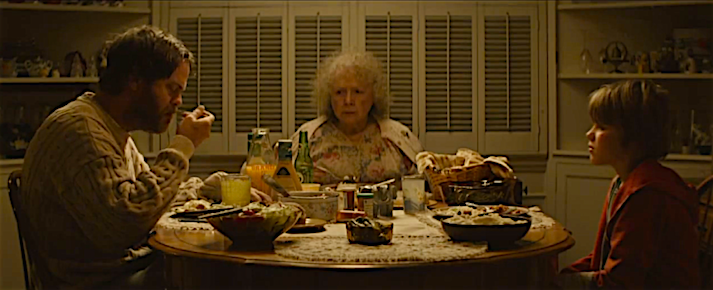
Grief, loss and resulting depression leave a child’s world vacant of hope.
Rain Wilson, Piper Laurie and Devin Brochu
Hesher
Spencer Susser, 2010
Cinematography | Morgan Susser
TJ has seen his mother killed in a violent car crash, his father is fading away, his Grandmother seems to be on the verge of dying, he is bullied, he is lonely and he is lost. This child is in a deep grief that he can only express through rebellion and righteous anger. Small and unsure, he needs a way to channel his rage.
Enter Joseph Gordon-Levitt’s Hesher.
This film is full of strong performances. The mix of realism and surrealism is intentionally vague. It is also one of the key reasons the film begs for repeated viewings. Each revisit reveals a bit more of something that we either did not notice or interpret correctly. Sadly the film’s use of the perverse and its steadfast refusal to hold the audience hand, seemed to cause indifference from film critics. Some dismissed the film as “unbelievable” and others accused it of being unnecessarily offensive. These opinions were short-sighted. It’s valid R-Rating also kept Gordon-Levitt’s mass of young girl fans from gaining access.

A creation of rage and survival.
Joseph Gordon-Levitt
Hesher
Spencer Susser, 2010
Cinematography | Morgan Susser
Of course, Hesher is almost all metaphor. It is doubtful that any aspect of Gordon-Levitt’s character is even real. Spencer Susser created a surreal film that many didn’t seem to realize was surreal. Much of this film is in TJ‘s mind — and the rest is propelled by bravery he finds in his imaginary Death Metal Hero. This is an angry and defiant movie told from the perspective of a very sad and traumatized child. This was not a sanitized cineplex movie. This is an Art House Cinema with unexpected edges. Sharp and threatening potential danger, Hesher continues to attract fans. The film is already being reevaluated and gaining a rightful Cult Following.
This year saw the release of some original, innovative and amazing films. One of the best films to find its way to cinemas this year was John Magary’s feature-length debut, The Mend. Magary’s film presents itself as one thing, but works its way under the skin. A brilliantly conceived and constructed film, The Mend is not simplistic. Always potent, the film’s power grows with each viewing. It has been gathering a following since it’s first screening.
John Magary’s feature length film debut is so impressive it is hard to believe that this is his first movie. Despite a low budget, this is a masterfully constructed work. Assured and rigid in its refusal to dumb itself down or fall back on cinematic trope, this odd dark comedy is sharp. It is cutting and it cuts so fast you do not realize you’re bleeding until well after the closing credits. Josh Lucas, an accomplished actor by any standard, delivers the performance of his career. Essentially an incisive character study of two brothers. Both are miserable. One represses everything and attempts to force his way through. The other seems to have slipped into an empty world of rage and damage.

Can they change or is the dysfunction shared between two brother a part of their inherited DNA?
Stephen Plunkett and Josh Lucas
The Mend
John Magary, 2014
As cruel as it is often deeply and artistically insightful. The brothers are caught in vicious cycle of dysfunction that may or may not have been “passed-on” or pulled into their own psyches. This idea of being genetically dysfunctional hoovers over the brothers. While it is often very angry and dark, it is also somehow always funny. The Mend feels a bit like a French film in the way it applies intellectualism and unexpected comedy. The film also has no problem of utilizing an often off-kilter style that doesn’t seem to match the content. Yet as we follow the eccentric narrative of these two broken men, the obscure stylistic leanings begin to make sense.
The Mend automatically lends itself to repeated viewings. Ideas and scenes haunt the viewer long after seeing the film for the first time. The second viewing offers a more firm understanding of what we have already seen. This is not a flaw. This is a brilliant move by Magary. There is nothing surface or easy about this smart film. So much is presented that it is hard to take it all in.

Giving an e-cig a run for it’s money.
Josh Lucas
The Mend
John Magary, 2014
Cinematography | Chris Teague
What could have easily turned out to be yet another in a long line of familial dysfunction and tormented boy-men who refuse to grow up, is actually a brutally realistic glimpse into the human instinct to survive. It is this same survival instinct that trips our two lead characters up as they each realize that they want so much more from life than what they are receiving. While each comes to realizations, it is unclear if either has the ability to escape each other or even their respective selves. Cynical but never satirical or unrealistic, these two brothers know they are sick and getting sicker, but getting well is easier discussed than achieved. This movie works brilliantly.

A man on the verge…
Josh Lucas delivers what is most likely the best work by a male actor in any film released in 2015.
The Mend
John Magary, 2014
Cinematography | Chris Teague
The Mend is still new enough to be seen before it reaches full Cult Film status. However you better hurry or you will be joining the party late.
I realize I should end this rambling post on positive note. I could easily discuss Alejandro Jodorowsky, Slava Tsukerman, John Waters, Andrzej Zuławski, The Coen Brothers, The Brothers Quay, Ed Wood, Peter Greenaway or Terry Gilliam. But instead I would like to turn my attention to the ultimate in my favorite type of Cult Film: The major studio cinematic error and the film that most best embodies the endless possibilities of its results. Yes, I must discuss the demented alchemy of Frank Perry’s Mommie Dearest.

“I’m not mad at you, I’m mad at the dirt.”
Faye Dunaway takes film acting to a whole new operatic level…
Mommie Dearest
Frank Perry, 1981
Shortly before the movie premiered, Faye Dunaway gave a couple of interviews in which she explained that she felt as if the spirit of Joan Crawford had possessed her. At that time one thought this was just an actor marketing her latest film. Who could have known that there was more truth to Ms. Dunaway’s statement than anyone could have imagined. Unless you are old enough to have sat in a crowded cinema during the first several days that Frank Perry’s legendary Mommie Dearest, you have no way of understanding the way in which this film hammered its way into the film viewing experience. I was still somewhat new to being a teenager as I sat next to my mother watching this doomed movie unspool.

“The meanest mother of them all…”
Joan Crawford terrorizing an enfant.
Mommie Dearest
Frank Perry, 1981
Cinematography | Paul Lohmann
It was jarring, odd and it often almost scary. There were smatterings of laughter, but mostly it was a communal jaw-dropping two hours of shared confusion. Mommie Dearest is essentially an epic cinematic error. Constructed in a clumsy manner with dialogue more fitting for a bad 1940’s melodrama and almost all of it delivered with mind-numbing bad performances.
There is a major exception to the bad acting.
That exception is Faye Dunaway. Stuck in a mediocre script better suited for an ABC Made-for-TV Movie of the Week and being led by a director who was clearly in over his head — Dunaway delivers one of the most memorable film performances of all time. That might sound like a good thing, but this is a performance beyond unrestrained.
Part impersonation mixed with passion, theatrical by the way of Kabuki Art and fused with a level of adrenaline that would have killed most athletes — Faye Dunaway goes to a place I’ve never seen another actor go. Fearless and with no net, this is an operatic show of force that threatens to melt the film on which it was captured.

Although notoriously maligned, Faye Dunaway’s performance as Joan Crawford is among one of the most interesting ever captured on film. This is an actor performing feats beyond imagination. And she does so without a net.
Faye Dunaway
Mommie Dearest
Frank Perry, 1981
Cinematography | Paul Lohmann
This transformative take on one of the most iconic movie stars to ever splatter on the screen, Faye Dunaway’s take on Joan Crawford is all persona and moves itself into what can only be called Avant-garde Performance Art. Sure it is funny to watch, but there is an artistic spark here that simply does not allow the audience to dismiss it. Faye Dunaway is more Joan Crawford than Joan Crawford could have ever hoped to be. There is no way this actor can fit nuance or even hint at vulnerability. This is a bold experimental sort of acting turn.
Dunaway is playing it legit, but totally untethered and constantly running it in high gear. And as she held onto balance in spike high heels, there was no net waiting to catch her if she fell. As campy as it gets, this is powerful performance. Her career would never recover. The damage was done, but this is the stuff of legend. Even all these years later, Ms. Dunaway continues to refuse to discuss this movie. And while this is a bit of a bummer, it also adds to this Cult Classic‘s credentials.
Pushing into it’s 35th year, Mommie Dearest remains a film that is impossibly entertaining and is forever cemented as the ultimate in Cult Film. Dialogue from this movie is firmly imprinted in the shared Pop Culture Brain. Wire hangers, rodeos and warning “‘Barbara, ‘PLEASE!‘” stay with us in darkly comic ways.
While John Water’s Pink Flamingos, David Lynch’s Eraserhead or The Rocky Horror Picture Show might have created the concept of The Midnight Movie, there can be no doubt that this is most likely the most important example of a big budget mainstream movie gone so far off the rails it offers endless hours of viewing. It is fair to call Mommie Dearest a bad film? Yes, but there is no denying its power and entertainment. Sometimes a bad film can come around to a whole new definition of good.
If cinema is as Fellini perversely defined it, an old whore, then I’m more than happy to get lost in the magic of an ever-evolving aged sex worker. Dim the lights and start the movie.
Matty Stanfield, 12.10.2015

Perhaps the best example of unintended camp, as funny as it gets — there is an undeniable level of artistic focus and energy within Faye Dunaway’s iconic portrayal of Joan Crawford.
Mommie Dearest
Frank Perry, 1981
Cinematography | Paul Lohmann





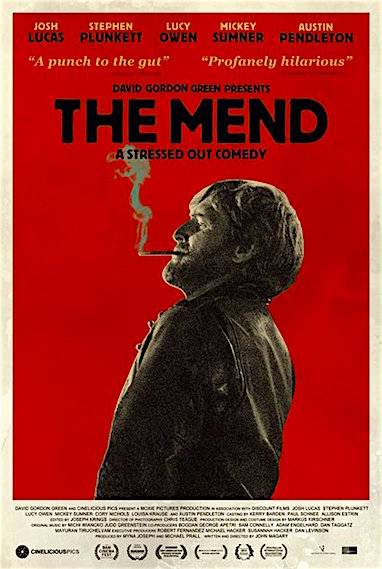

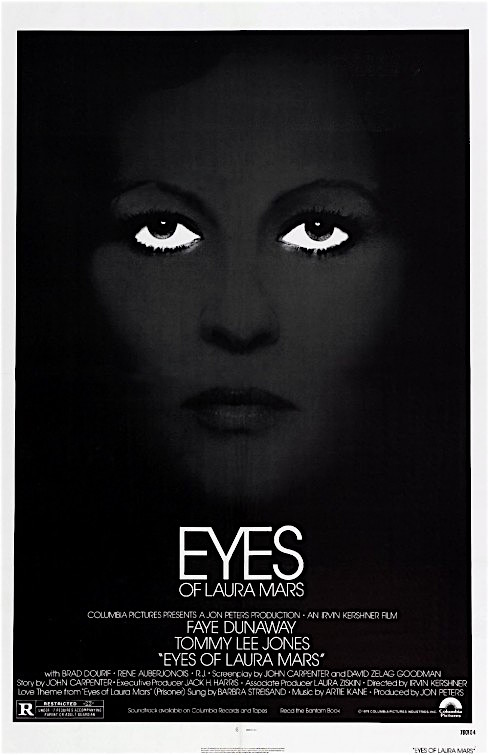










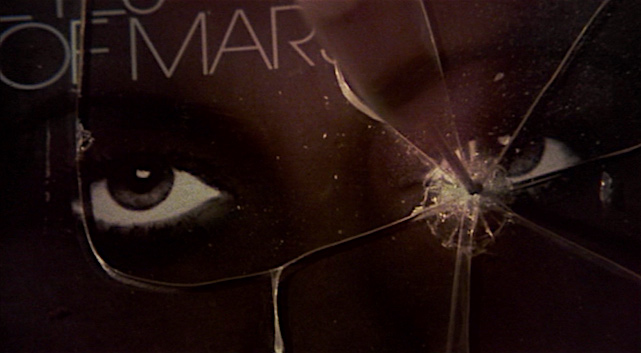












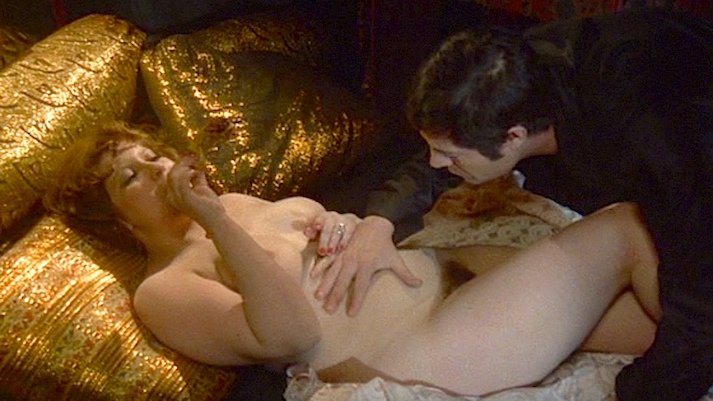


























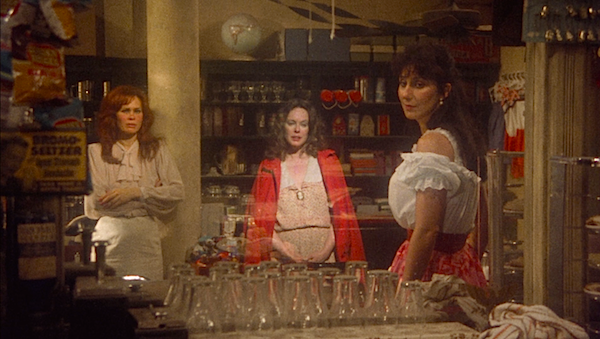

















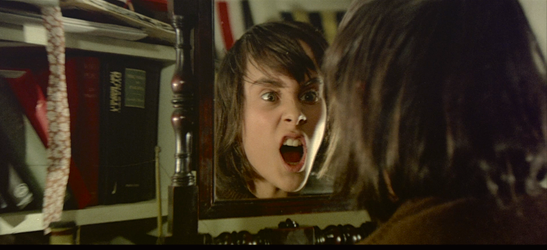







































!["You wanna fuck?" Well, yes, Mr. [insert name here] is "totally OK" to take Carrie Fisher up on her offer. Shampoo Hal Ashby, 1975 Cinematography | László Kovács](https://mattystanfield.wordpress.com/wp-content/uploads/2015/07/carrie-carrie-fisher-34047476-600-400.jpg?w=922)
















































